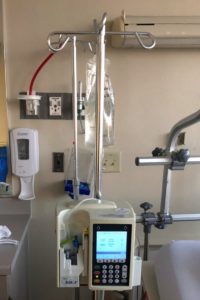
Hispanic adults hospitalised for treatment of symptoms of peripheral arterial disease (PAD) were more likely to access this care by going to the emergency room (ER), and they experienced longer and more expensive hospitalisations than non-Hispanic white patients with PAD, according to preliminary research to be presented at the American Heart Association (AHA) Quality of Care and Outcomes (QCOR) Research Scientific Sessions 2021. The meeting will be held virtually on Monday 15 November 2021 in conjunction with the Association’s Scientific Sessions 2021.
“The Hispanic population is one of the fastest growing ethnic groups in the USA, and prior studies have shown worse outcomes among Hispanic adults with PAD, including higher rates of amputation and fewer revascularisation procedures compared to non-Hispanic white adults with PAD,” said lead study author Kristie Harris, an instructor of Medicine at Yale School of Medicine in New Haven, USA, in a press release from the AHA. “The prevalence of PAD among Hispanic individuals has been difficult to determine because this population often experiences a lack of access to healthcare and is underrepresented in many population-based studies. Our study raises awareness and confirms some of these disparities.”
Harris and her team examined hospital admission data from the 2011–2017 National Inpatient Sample to study differences in the experiences of Hispanic and non-Hispanic white adults treated for PAD symptoms. They investigated whether people sought inpatient PAD care by presenting to the ER or if they came for a planned, elective visit, likely sent by an outpatient care professional.
During the study period, there were 1,018,220 PAD hospitalisations among adults age of 18 years and older in the USA (39% female; 14% Hispanic adults).
The percentage of people who accessed inpatient hospital care via the emergency department increased among both Hispanic adults and non-Hispanic white adults between 2011–2017. The increase was substantial among those who are Hispanic, the AHA press release reports, with the percentage of PAD hospital admissions occurring through the ER jumping from 50% to 70% over the course of the study period.
The researchers found that Hispanic adults with PAD were 80% more likely to access inpatient PAD care by going to the ER for symptoms compared with non-Hispanic white adults hospitalised with PAD. Additionally, Hispanic adults were 12% less likely to undergo elective hospital admissions for PAD.
Among the other findings in the study:
- Across all years, 58% of hospital admissions among Hispanic adults began with a visit to the ER, compared with 36.7% for non-Hispanic white adults
- The average hospital visit was 4.5 days for Hispanic patients vs. 3.7 days for non-Hispanic white patients, and overall hospital costs were higher, too—US$63,813 vs. US$52,368, respectively
“Our findings reinforce other research that indicates Hispanic individuals often lack a usual source for routine healthcare and frequently defer or avoid care due to costs,” Harris said. “Instead of delaying care, a better way to manage PAD and reduce the risks of future complications is with regular evaluation and follow-up, usually with a primary care doctor or vascular specialist.”
Harris said prevention is key, and as with any other type of cardiovascular disease, people should be encouraged to quit smoking, be physically active and to manage diabetes, high blood pressure or high cholesterol, which all increase the risk for PAD. Individuals who develop pain in their feet or legs with walking not associated with muscle strain should seek medical care early for a comprehensive evaluation.
“This study highlights the importance of better tailoring PAD prevention and management, especially among Hispanic people, which could reduce the need for hospital ER care or hospitalisation,” she said. “Systematic efforts are needed to ensure Hispanic people with PAD have more accessible, affordable and culturally sensitive outpatient care. Efforts should include supports that educate the community regarding the signs and symptoms of PAD and encouragement to seek care early.”
The study reported no funding sources.











